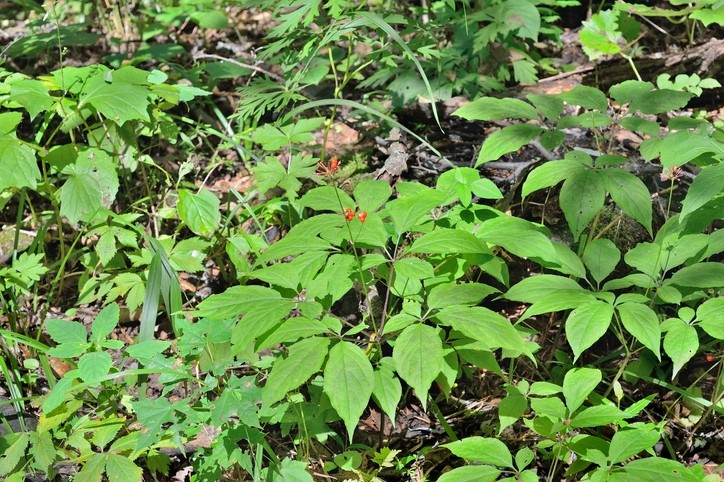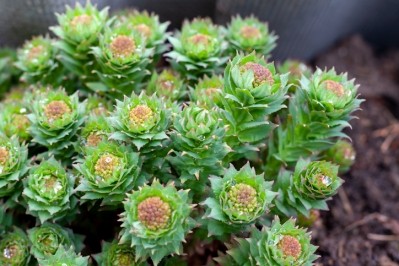Immediate action needed to protect medicinal plants from climate change, paper argues

The paper was written by a group of prominent botanical experts that included Wendy Applequist, PhD, of the Missouri Botanical Garden, Josef Brinckmann, research fellow in medicinal plants and botanical supply chain at Traditional Medicinals, and other experts from Australia, the Netherlands, South Africa and the UK.
Titled Scientists’ Warning on Climate Change and Medicinal Plants, the paper, which was published in the journal Planta Medica, is part of a wider collaborative effort that follows on from the publication called World Scientists’ Warning to Humanity: a Second Notice, that included input from more than 15,000 experts in 184 countries.
That document included a call for category experts to assess the risk from human activities and climate change on their particular fields. For medicinal plants, habitat loss, aggressive wild harvesting to meet growing demand as well as changing growing conditions all present grave and as yet unquantified risks, the authors said.
Plants under pressure
Even before the specter of anthropogenic climate change raised its head, many niche species of plants have been under attack because of the impacts humans have had, the authors noted.
“It is well known that many plant species are or soon will be threatened with local or global extinction. A recent study reported that nearly 600 plant species have gone extinct in the past 250 years. Even without climate change, wild plant populations are endangered around the world by human activities, especially habitat destruction and fragmentation, which create small, isolated populations that are at higher risk of local extinction,” they wrote.
Harvesting pressure for high demand wildcrafted botanicals has made for smaller and fewer plants, the authors noted. This effect has been seen in American ginseng (Panax quinquefolius L.), snow lotus (Saussurea laniceps Hand.-Mazz.), and goldenseal (Hydrastis canadensis L.).
Shifting growing regions, more pests, more drought
In addition to this pressure, climate change is likely to change the growing range for many medicinal plants. How well they survive would depend on the inherent mobility for each species. In some cases, a montane species might be able to adapt to a changing climate by moving from a south facing slope to a north facing one in close proximity. But if the ranges move too far too fast, exceeding the distance a given plant species could move within a specified time span, this could result in local extirpations, the authors said.
The changing weather could also change the pathogen and pest picture, too, they said. This has already been observed in the Rocky Mountain West, where populations of the pine bark beetle, which is especially deadly to lodgepole pine, exploded after a series of winters that weren’t cold enough to kill most of the overwintering bugs. In Colorado alone the epidemic has affected 3.4 million acres and has killed as many as 834 million trees.
The picture is a complex one, the authors noted, with some plants likely to lose range while others expand. But even if a medicinal species might survive by shifting its range, the people who depend on these plants can’t follow.
“Though such species may survive by spreading into newly appropriate habitats, human populations would still suffer harm if medicinally or economically important plants are lost from locally accessible lands. For example, ‘complete loss of habitat’ was predicted for Tylophora hirsuta (Wall.) Wight, used to treat asthma and urinary retention, in parts of northern Punjab, Khyber Pakhtun Khuwa, and Baluchistan,” the authors wrote.
Meteorologists have warned that a warming climate is likely to increase the prevalence of drought in certain regions. How this will affect medicinal plants is unclear, the authors noted. This might increase the concentration of active metabolites in some case, making the plants ‘better’ in other words. But with more drought, there are likely to be fewer plants overall, more than outweighing any benefit those higher concentrations might have.
What’s the effect of higher CO2?
And the role of higher CO2 levels is also unclear. Some models of high CO2 concentrations have shown that plants grow faster but with fewer of their desirable chemical components. Some food crops seem to respond by producing more carbohydrates but incorporating fewer micronutrients, becoming something analogous to plant junk food. In medicinal plants, higher CO2 could work to smother whatever effect the drought stimulus might have.
“In an experimental model using sage (Salvia officinalis L.), the monoterpene concentration increased with drought stress but decreased with elevated CO2, so that when CO2 was elevated, the imposition of drought stress was necessary merely to equal the concentrations in well-watered plants at ambient CO2 [108]. It should be noted that that model is not true for all species,” the authors wrote.
Action needed now
Since it appears that quick large-scale action to halt the increase of greenhouse gas emissions, particularly CO2, will be politically impossible, the authors urged local and national governments to start now to do what can be done to limit the damage.
“Actions that may help to support medicinal plant populations include promoting the cultivation of medicinal plants in community gardens to maintain local access, preserving and respecting the value of traditional knowledge about plants and their sustainable use, training harvesters in sustainable practices. Encouraging or requiring the use of certification programs for wild-collected material, especially in international commerce, and implementing urgent, large-scale conservation programs, including habitat protection,” they wrote.
Source: Planta Medica
2019 Nov 15. doi: 10.1055/a-1041-3406. [Epub ahead of print]
Scientists’ Warning on Climate Change and Medicinal Plants
Authors: Applequist WL, Brinckmann JA, Cunningham AB, Hart RE, Heinrich M, Katerere DR, van Andel T.
















